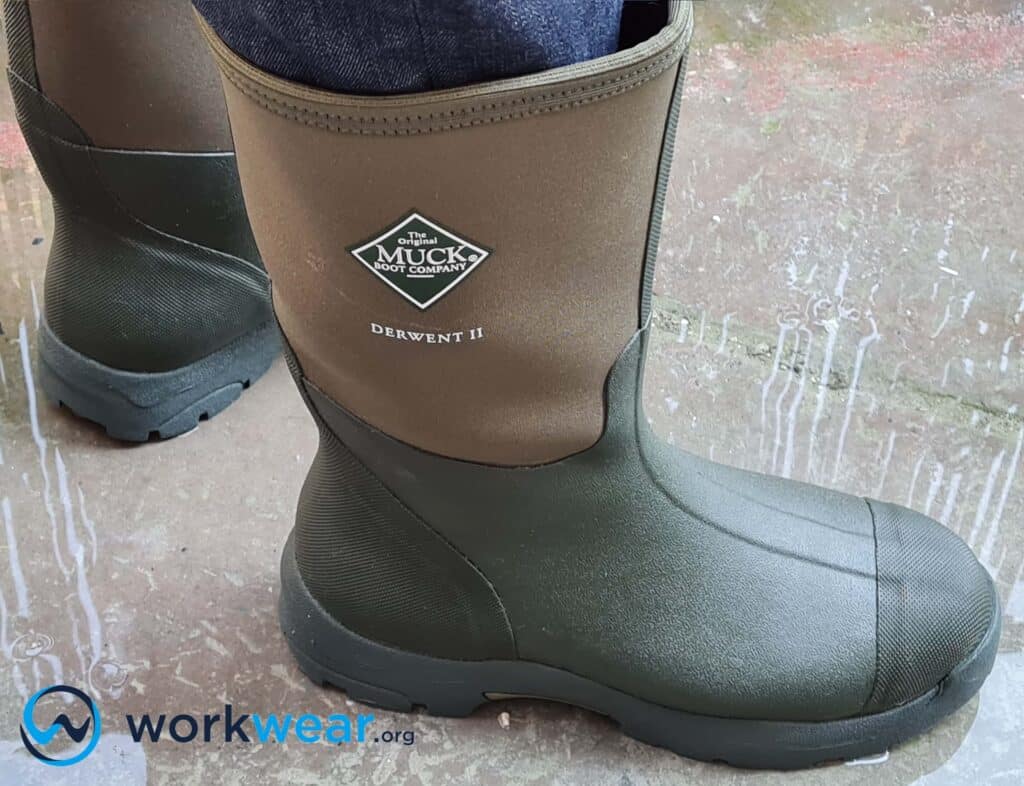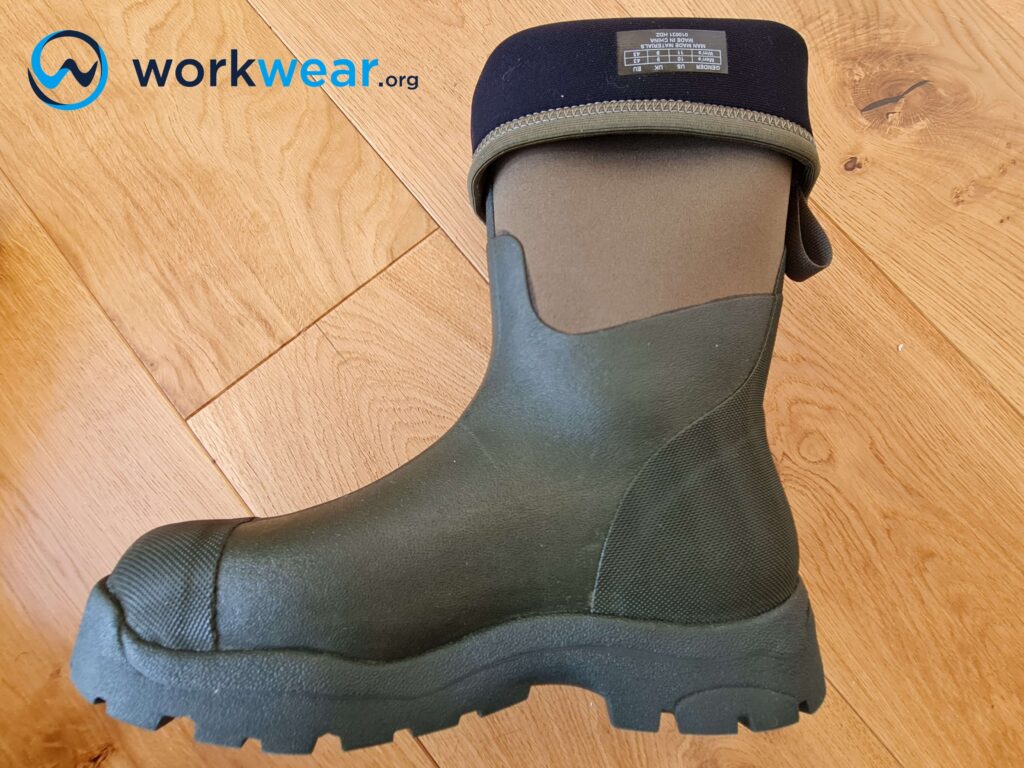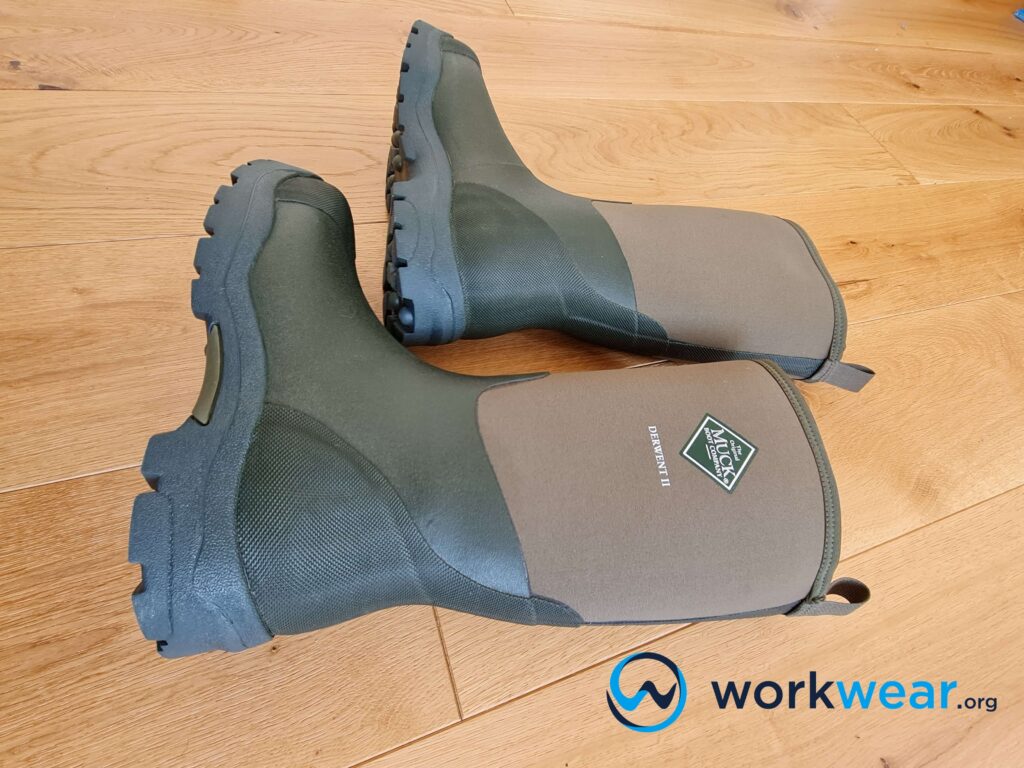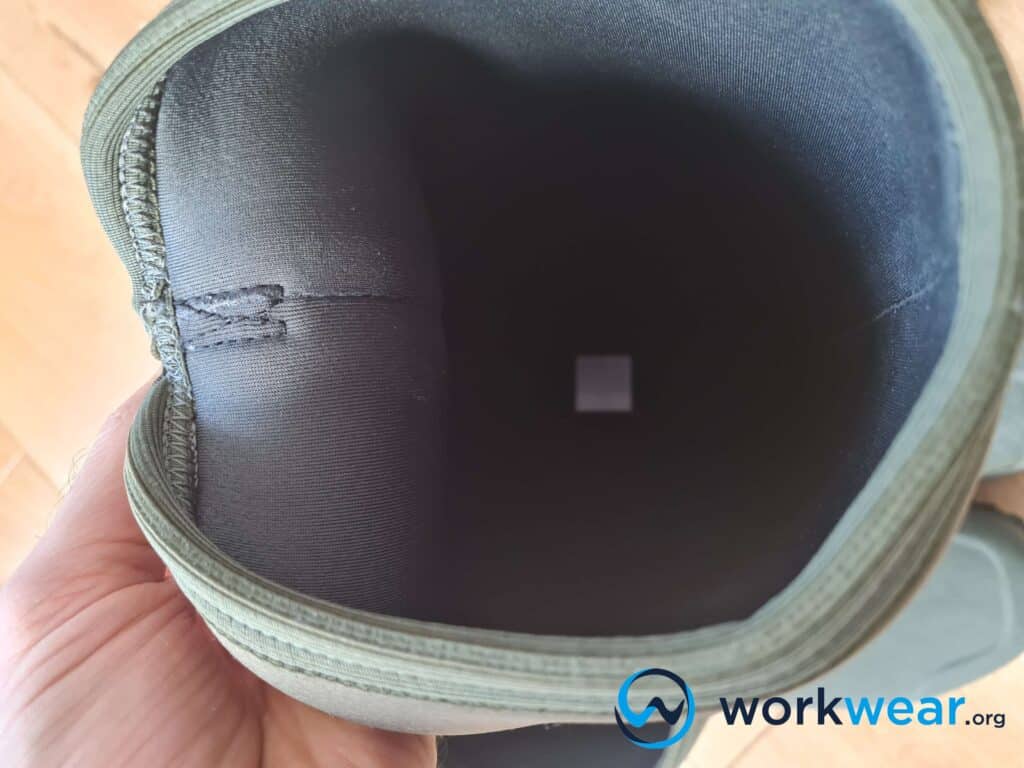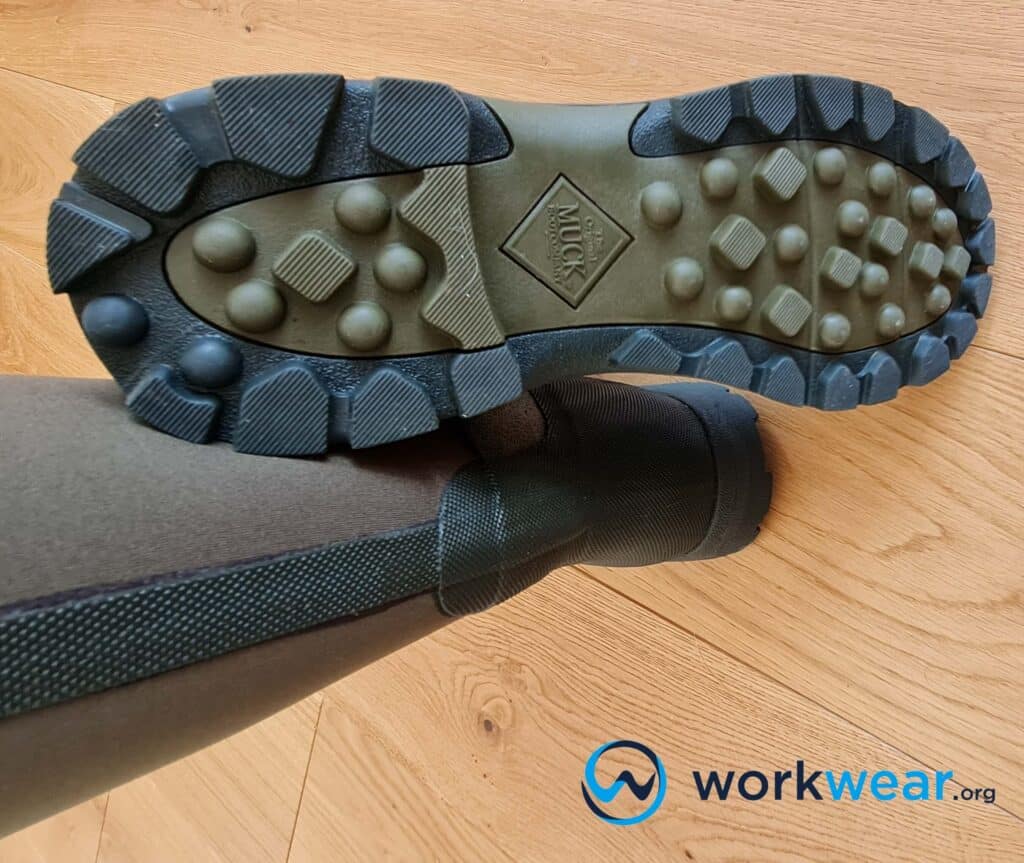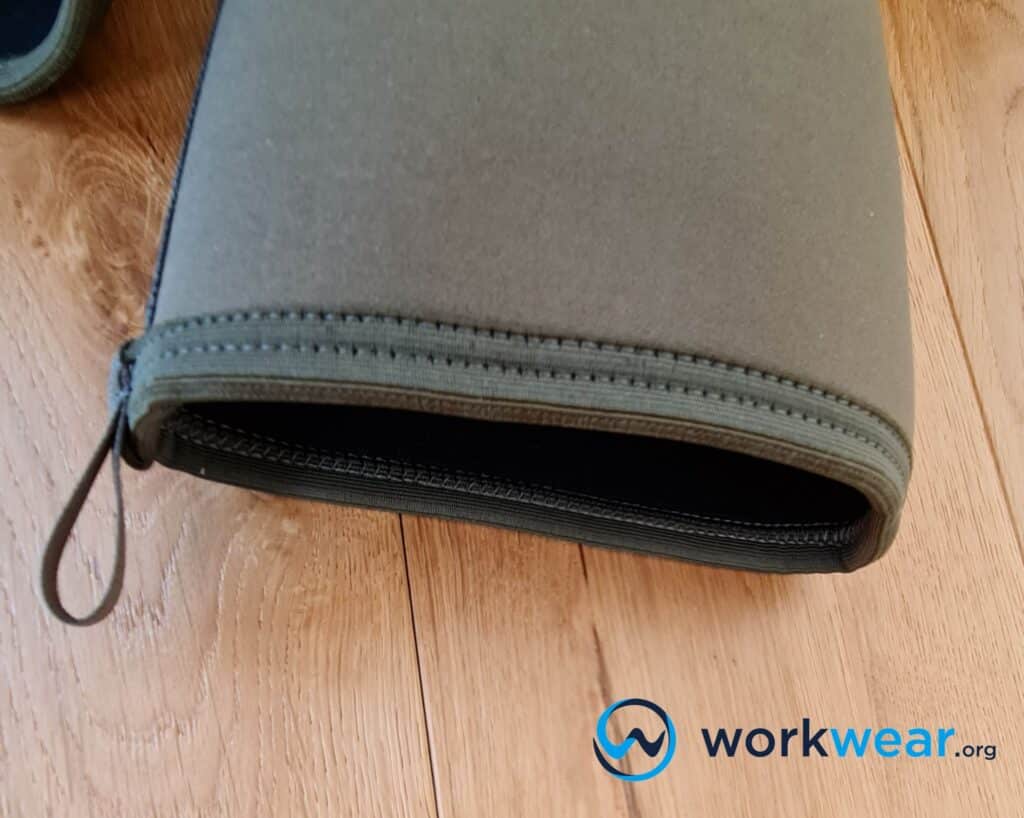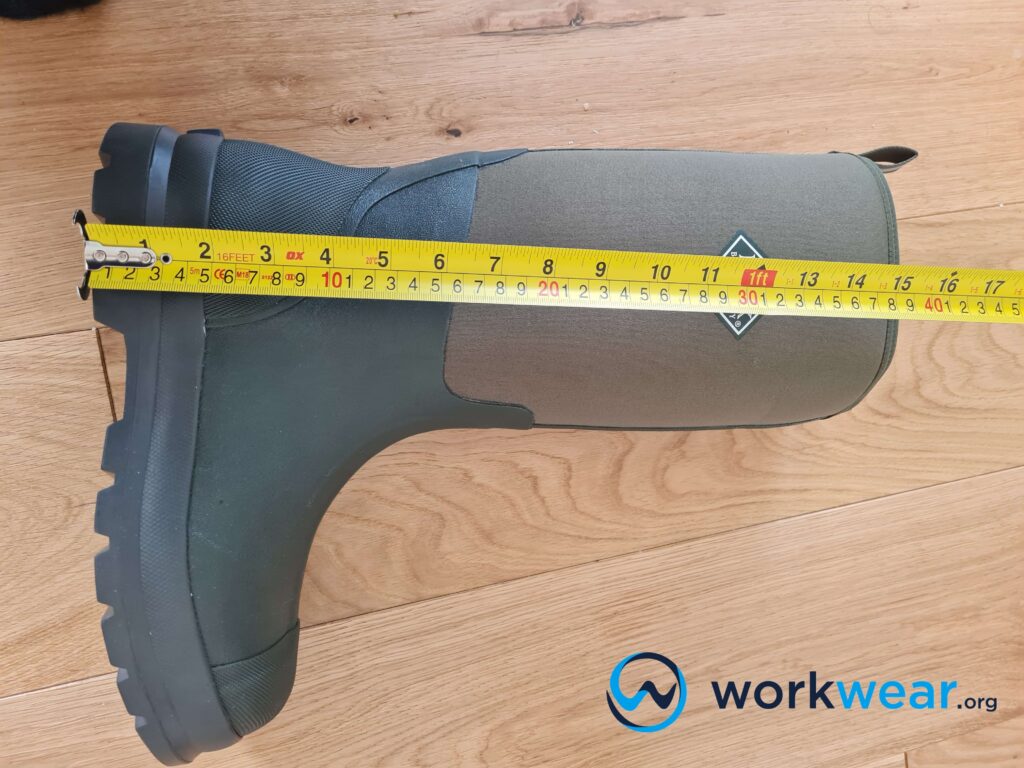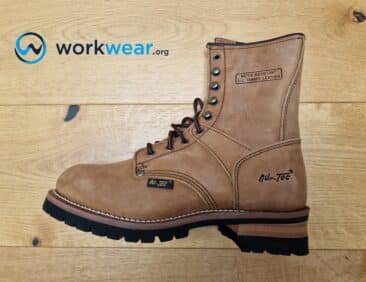Going to work in wet places is a challenge on its own. Taking on the day’s tasks with soaked feet is harder, so it’s important to have the proper footwear. The Muck Boot Company makes completely waterproof boots, and we had the chance to test two of its most outstanding products – the Chore Classic Boot and the Derwent II Boot. Looking at these boots’ features, we understand if you’re confused about which one to choose because they seem the same. Don’t worry; we’re here to take the confusion away by examining the boots’ similarities and differences side-by-side. Read on to get a clearer view of the boots’ features and how they suit your needs in the workplace.
Muck Boot Chore vs Muck Boot Derwent ii Boots
Muck Boot Chore and Muck Boot Derwent II are very similar – which one should you opt for?
All of our content is editorially independent and based on real product testing. Learn More
Toe & Heel Reinforced
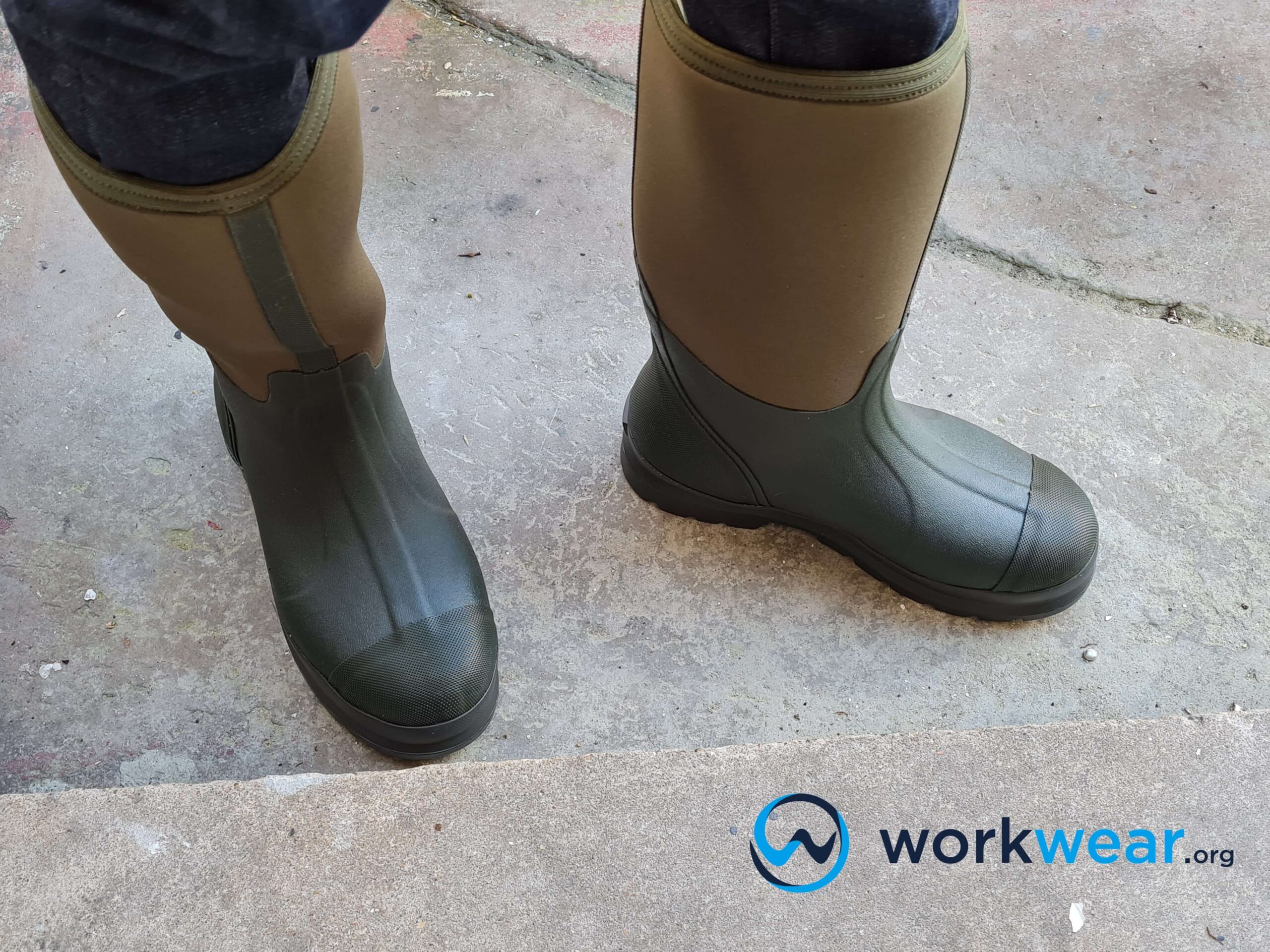
Muck Boot Chore
- All-around use in outdoor settings such as in a farm or garden
- People who need a waterproof boot that also offers increased breathability
- Those who prefer a relaxed fit for increased comfort
Lower-profile option
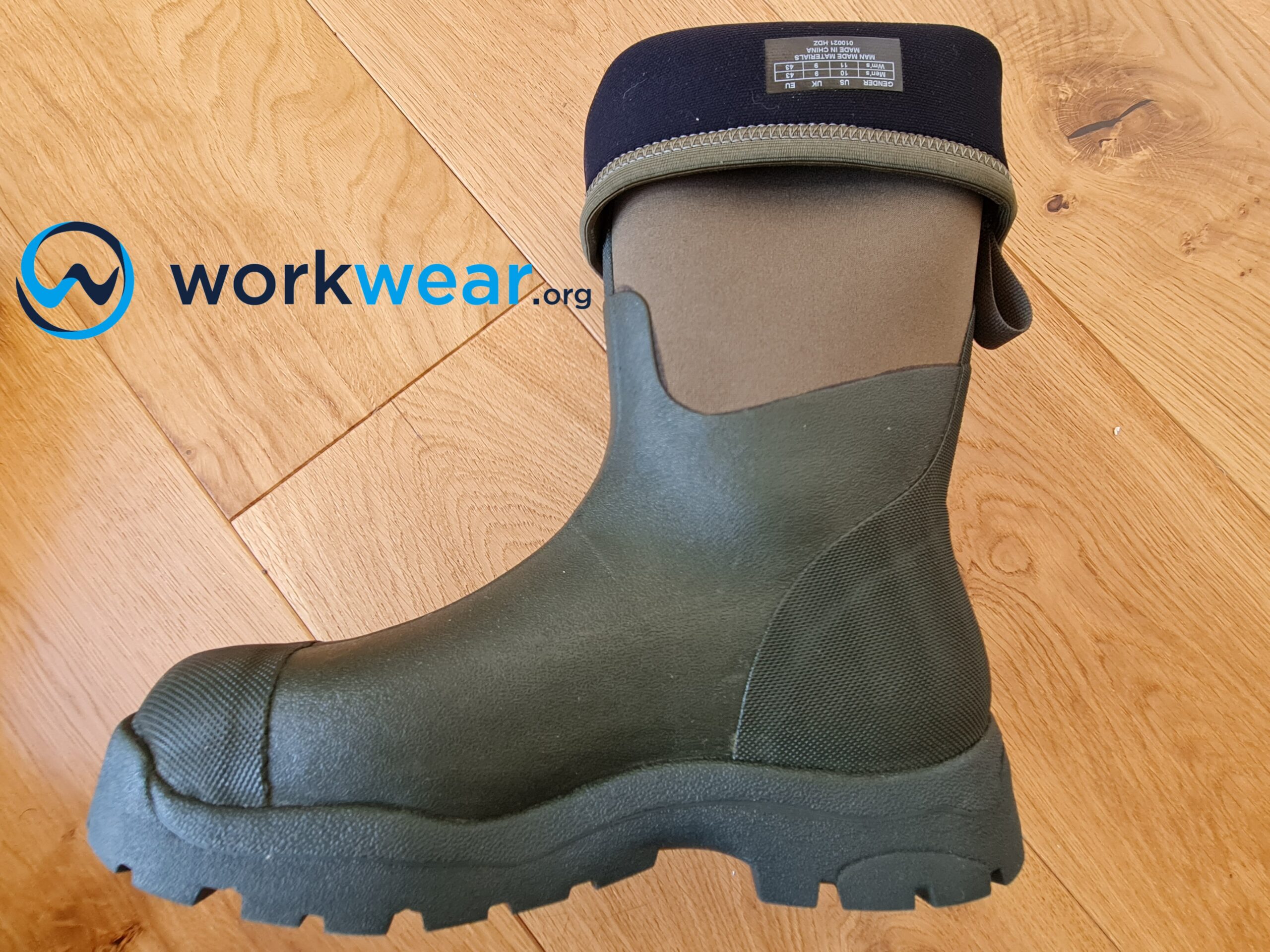
Muck Boot Derwent II
- People who prefer a pull-on boot design with no laces
- Those who work in wet or muddy environments and need waterproof boots
- People who want boots that are easy to clean and maintain after use
Main Similarities
Water Resistance
The Muck Boot Company is known for producing top-quality, waterproof boots. The Muck Derwent ii and Chore Classic Boots are waterproof. They’re built out of rubber and neoprene, and both work to block wet elements completely. These boots protect the feet from being soaked by mud, rain, and other sources of moisture. Their designs also work on effectively stopping liquids from entering. The tall shafts prevent wet elements from splashing inside while walking through water, mud, or muck. The outstanding water resistance makes these boots ideal for working outdoors in the rain, on muddy ground, and in other wet areas.
Winner: The Chore Classic and Derwent II Boots win with completely waterproof designs. The rubber and neoprene sections throughout the boots successfully seal out liquids to keep the feet dry in wet, cold conditions.
Insulation
These Muck Boot boots retain heat much better than ordinary rubber boots. The difference lies in the top neoprene section insulating the foot from external temperatures. This material isn’t just waterproof, and traps heat inside the boot to keep the feet warm. The boots’ ability to deliver comfortable warmth makes them great footwear partners for wet, cold environments. The Chore Classic and Derwent II are designed to retain a comfortable feel from cold to warm climates.
Winner: the Derwent II and Chore Classic Boots are both winners for heat retention and insulation because they’re equipped with neoprene upper sections. This material preserves warmth to protect the feet from feeling frozen in low-temperature settings.
Toe and Heel Reinforcement
These boots don’t have safety toe caps, but they can protect the feet against mild impact or compression. The Chore Classic Boot’s toe section is reinforced with a triple layer of rubber, while the heel area is quadruple-layer reinforced. These extra layers keep these high-wear areas protected from abrasion as well. The same reinforced sections are also built into the Derwent II Boot, although they don’t have the same number of layers as the enhancements in the Chore Classic.
Winner: The Chore Classic Boot and Derwent II Boot both have reinforced heels and toes, but the latter wins in this aspect. This is because the Chore Classic has four rubber layers reinforcing the heel and three layers over the toe area, while the Derwent II doesn’t have that many layers in place.
Flexibility
Muck Boot boots such as the Derwent II and Chor Classic are preferred by many for their flexibility. The neoprene sections that are incorporated into the boots are very flexible. They stretch as the feet enter and mold to the feet and lower legs’ shape, moving along with their movements for remarkable comfort and a wider range of motion. The rubber used for the outsoles of these boots is also quite flexible, allowing the feet to move naturally without rigid materials getting in the way.
Winner: Chore Classic and Derwent II Boots are winners with comfortable, flexible designs.
Traction
The Derwent II and Chore Classic Boots have high-quality rubber outsoles. Both designs have large treads that secure footing over different surfaces. The outsoles have high-traction structures to stabilize walking, especially over slippery or unstable ground. Their designs are strong and durable, so they won’t easily deteriorate with heavy use for long periods, even in tough conditions.
Winner: The Chore Classic and Derwent II Boots stand out with high-grip rubber outsoles that can stop slipping in muddy, slick, or uneven ground conditions.
Fit & Sizing
These boots have spacious interiors. They have enough room for the feet to move in comfortable ways. These boots also have the extra space for wearing thick socks, which may be needed to keep the feet comfortable and warm in exceptionally cold environments. The toe boxes also have roomy designs to allow the toes to flex and wiggle as needed, so they won’t be forced to spend hours in a tight space. The Derwent II and Chore Classic Boots are easy to put on and pull off. The neoprene sections on top stretch to accommodate the feet as they enter, eliminating the hassle and discomfort that can result from trying to pull on tall, stiff rubber boots. It should be noted, though, that the relaxed fit can feel unstable for some, in which case a smaller size may be preferred for a more stable, snug fit.
Winner: The Derwent II and Chore Classic Boots win with spacious designs that enhance comfort and range of motion.
Breathability
All Muck Boot products have built-in Breathable Airmesh linings. These layers allow the air to pass through and circulate naturally inside the boots. They help dissipate heat and sweat before these build up to uncomfortable levels. This level of breathability keeps the feet feeling cool and fresh for hours to improve foot comfort, especially in humid or hot surroundings.
Winner: The Derwent II and Chore Classic Boots win in this aspect, with breathable designs that keep the feet fresh and comfortably dry throughout the day.
Durability
These boots have durable designs. They use heavy-duty rubber for the soles and to reinforce the heel and toe sections. These rubber parts can withstand heavy use and abuse, making these boots suitable for demanding jobs and environments. They protect against scuffs and scratches from exposure to abrasive objects. Both boots are equipped with steel shanks for extra support and enhanced structural integrity, increasing the boots’ resilience against premature damage for long-lasting performance.
Winner: The Chore Classic and Derwent II boots are both winners, with durable designs that can withstand normal wear and tear in challenging conditions.
Main Differences
Height
These are both tall boots with just a small difference in shaft heights. The Chore Classic stands at approximately 15.2 inches (as shown in the image above), while the Derwent II has an estimated height of 13.6 inches. With these extended heights, both boots provide great coverage against abrasion from sharp or rough objects in the environment. These tall boots also make it harder for wetness to get in from the top, so the feet can stay dry and comfortable for longer in wet conditions.
Winner: Even though these boots are both tall, the Chore Classic Boot emerges as the winner as it offers superior coverage with its 16-inch height.
Who’s the Overall Winner?
The Chore Classic Boot wins in this comparison, but only by a small margin. It stands out with a taller design, as well as more layers of reinforcement in high-wear areas. However, it shared similar traits with the Derwent II, including strong waterproofing, good insulation, flexibility, breathability, durability, and high-traction outsoles.
Recap
Muck Boot Chore Classic Boots are suitable for:
- All around quality waterproof rain boots
- Better toe and heel support and protection
- People who need extra-tall waterproof boots
Muck Boot Derwent II Boots are your best bet if you:
- Want flexible waterproof boots
- Need waterproof boots for cold work conditions
- Prefer tall rubber-and-neoprene boots with a relaxed fit
Comparison table
| Muck Boot Chore Classic Boot | Muck Boot Derwent II Boot | |
|---|---|---|
| Water Resistance | Waterproof | Waterproof |
| Insulation | Strong | Strong |
| Toe and Heel Reinforcement | Excellent (quadruple layer for heels and triple layer for toes) | Strong |
| Flexibility | Flexible | Flexible |
| Traction | Excellent | Excellent |
| Fit and Sizing | Relaxed fit | Relaxed fit |
| Breathability | Good | Good |
| Durability | Durable | Durable |
| Height | Approximately 15.2 inches | Approximately 13.6 inches |
Conclusion
The Muck Boot Chore Classic Boot and Derwent II Boot may look like mirror images at first glance, but crucial qualities set these two apart. They share the same levels of waterproofing, durability, flexibility, traction, insulation, breathability, and relaxed fit designs. However, the Chore Classic Boot stands out with electrical hazard protection, a taller height, and more layers of rubber reinforcement for the heel and toe sections.
FAQ's
- Can these boots be used indoors?
- Yes, they can be used in some cold, wet settings indoors. However, the thick outsoles of these boots are typically too bulky for indoor use and are better suited for wet, slippery conditions usually found outdoors.
- Do these Muck Boots make the feet sweaty?
- No. They’re fitted with mesh linings that allow the air to come in and circulate freely, protecting the feet from sweating a lot and maintaining a cool, fresh feeling for longer.
- Is it easy to walk and move around with these boots on?
- Yes. The Derwent II and Chore Classic Boots have flexible designs that allow the feet to flow more naturally. The neoprene uppers and rubber outsoles flex along with the feet’s motion for better mobility and comfort on the job.
- Can the chore Classic and Derwent II Boots be used in freezing temperatures?
- Yes. These boots can insulate the feet in freezing temperatures – but only for one hour. For harsher conditions, Muck Boot has other products with additional insulation (like a fleece lining) to protect the feet in even lower temperatures.

